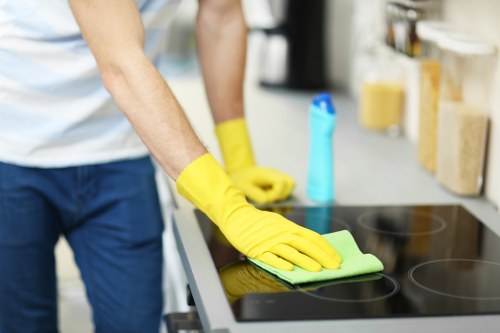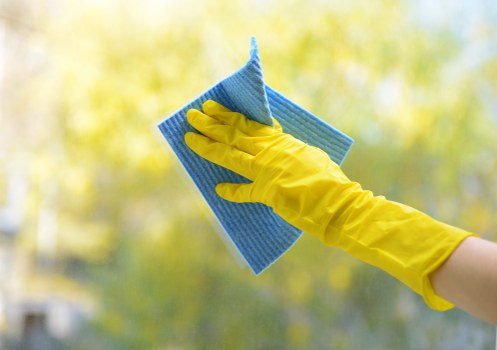Deep Cleaning a Temple: A Comprehensive Guide

Temples are sacred spaces that hold immense spiritual and cultural significance. Maintaining their cleanliness is not just about hygiene but also about preserving their sanctity and beauty. Deep cleaning a temple involves meticulous planning and execution to ensure every corner is immaculate.
Understanding the importance of deep cleaning helps in maintaining the temple's aesthetics and ensuring a pleasant environment for worshippers. Regular cleaning routines are essential, but deep cleaning delves deeper to address hidden dirt and grime that regular cleaning might miss.
In this guide, we will explore the best practices, tools, and methods for deep cleaning a temple effectively. Whether you are a temple caretaker or someone interested in maintaining sacred spaces, this guide will provide valuable insights.

The Importance of Deep Cleaning a Temple
Deep cleaning a temple goes beyond surface-level tidying. It ensures that the space remains pure and conducive to spiritual activities. A clean temple promotes a sense of peace and tranquility, allowing worshippers to focus on their prayers without distractions.
Moreover, regular deep cleaning helps in preventing the buildup of dust, mold, and bacteria, which can be detrimental to both the structure of the temple and the health of its visitors.
By investing time and effort into deep cleaning, temple authorities can uphold the temple’s reputation and ensure it remains a welcoming place for the community.

Essential Tools and Supplies for Deep Cleaning
Having the right tools and supplies is crucial for effective deep cleaning. Here are some essentials:
- Heavy-duty vacuum cleaners
- Mild detergents and disinfectants
- Microfiber cloths
- Scrubbing brushes
- Protective gloves
- Buckets and mops
These tools help in tackling different surfaces and areas within the temple, ensuring a thorough cleaning process.
It's important to choose eco-friendly and non-toxic cleaning agents to maintain the temple's sanctity and protect the environment.

Step-by-Step Deep Cleaning Process
1. Planning and Preparation
Before starting the cleaning process, create a detailed plan outlining the areas to be cleaned and the materials needed. Inform all temple staff about the schedule to ensure smooth execution.
2. Decluttering
Remove any unnecessary items, decorations, or debris from the temple premises. This step makes the cleaning process more efficient and effective.
3. Cleaning Surfaces
Wipe down all surfaces, including floors, walls, and altars, using appropriate cleaning agents. Pay special attention to high-touch areas to eliminate germs and bacteria.
4. Floor Cleaning
Use vacuum cleaners and mops to thoroughly clean the floors. For intricate flooring patterns, use scrubbing brushes to remove embedded dirt.
5. Maintaining Sacred Items
Handle all sacred items with care. Dust off idols, lamps, and other religious artifacts gently to preserve their condition and sanctity.

Maintaining Cleanliness After Deep Cleaning
To keep the temple clean post deep cleaning, establish a regular maintenance schedule. Daily cleaning routines should complement periodic deep cleaning sessions.
Educate the temple staff and visitors about the importance of maintaining cleanliness. Simple practices like removing shoes at the entrance and using trash bins can significantly reduce mess.
Regular inspections can help identify areas that need attention, ensuring the temple remains spotless and inviting.
Local Relevance: Nearby Areas for Deep Cleaning Services
For temples located in urban areas, accessing professional deep cleaning services nearby can enhance the efficiency of the cleaning process. Here are some of the closest areas known for their expertise in temple cleaning:
- Downtown District: Located just 2 miles from the temple, offering specialized cleaning services for large religious spaces.
- Greenwood: A 3-mile radius area known for eco-friendly cleaning solutions suitable for temples.
- Maple Heights: 4 miles away, provides skilled artisans for maintaining intricate temple decorations during cleaning.
- Lakeside: Situated 5 miles from the temple, offers comprehensive cleaning packages tailored to spiritual establishments.
- Riverside: 6 miles distant, renowned for their efficient and respectful approach to temple deep cleaning.
- Hilltop: 7 miles away, specializes in preserving the sanctity of temples while performing thorough cleanings.
- Sunset Boulevard: 8 miles from the temple, equipped with advanced cleaning technologies ideal for large temples.
- Oakwood: Located 9 miles away, known for their meticulous attention to detail in temple maintenance.
- Brookstone: 10 miles from the temple, offers customizable cleaning schedules to fit the temple’s needs.
- Elm Street: 11 miles distant, provides both interior and exterior temple deep cleaning services.
- Pinecrest: 12 miles away, focused on eco-friendly and non-intrusive cleaning methods for temples.
- Cedar Park: 13 miles from the temple, acclaimed for their professional and respectful cleaning teams.
- Willow Springs: 14 miles distant, offers comprehensive cleaning solutions tailored to religious spaces.
- Birchwood: 15 miles away, specializes in maintaining the traditional aesthetics of temples during cleaning.
FAQs
1. How often should a temple undergo deep cleaning?
Temples should ideally undergo deep cleaning at least twice a year. However, the frequency can vary based on the number of visitors and the size of the temple.
2. What are the best eco-friendly cleaning agents for temples?
Eco-friendly cleaning agents such as vinegar, baking soda, and mild detergents are excellent choices. They effectively clean without harming the environment or the temple’s sacred artifacts.
3. Can deep cleaning damage temple decorations?
When done correctly, deep cleaning should not damage temple decorations. It’s important to use appropriate cleaning methods and tools, and to handle all sacred items with care.
4. Should professional services be hired for deep cleaning a temple?
While it’s possible to conduct deep cleaning in-house, hiring professional services ensures a more thorough and efficient cleaning process, especially for larger temples with intricate details.
5. How can temples maintain cleanliness between deep cleaning sessions?
Implementing a regular cleaning schedule, educating visitors about cleanliness practices, and conducting periodic inspections can help maintain cleanliness between deep cleaning sessions.


